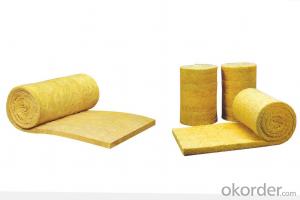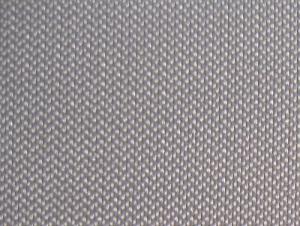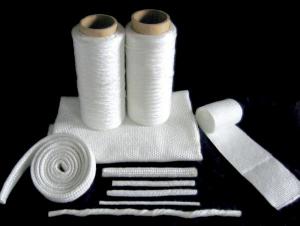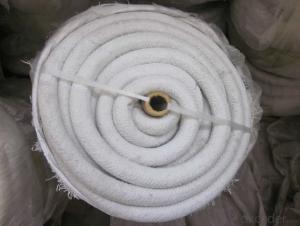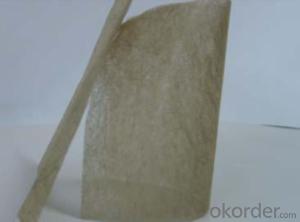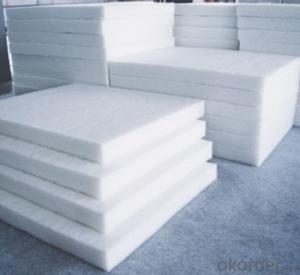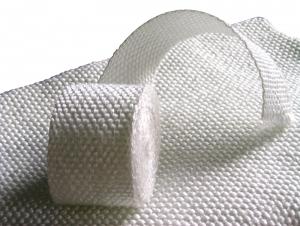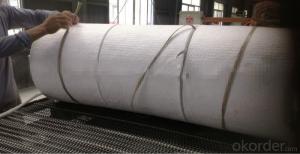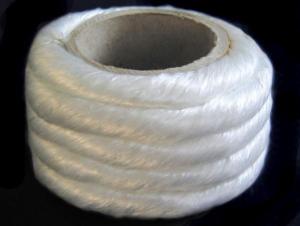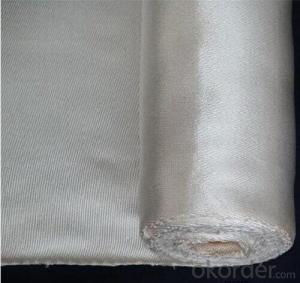Glass Fiber Thermal Insulation Wool Blankets
- Loading Port:
- Qingdao
- Payment Terms:
- TT OR LC
- Min Order Qty:
- 5000 m.t.
- Supply Capability:
- 10000 m.t./month
OKorder Service Pledge
OKorder Financial Service
You Might Also Like
Specifications
1.cheap wool blankets
2.Sound absorption and noise reduction
3.Easy for construction
4.Grade A1 fireproof
Advantages and features about glass fiber thermal insulation cheap wool blankets in china
1. excellent thermal insulation--very low thermal conductivity coefficients
2. excellent acoustic insulation--can reduce noise and sound transmitting
3. non-corrisive, durable
4. moisture resistant, fire resistant
5. good strength to resist deformation
Item | glass fiber thermal insulation cheap wool blankets in china |
Material | Main raw material: glass |
Application | Wall inslation, ceiling, roofing, heat insulation, iron air conduct, building and construction project, air conditioner, refrigeration equipment, damping, sound absorption and noise reduction, boilers, reaction vessels, tanks, ducts, high temperature workshop and chemical industries, so on. |
Size | Volume weight: 10-72 kg/m3 Thickness: 25-100mm Length: 3-20m Width: 1200mm |
Highest Usage Temperature | 450C |
Heat Conduct Coefficient | 0.045-0.032 W/mk |
Hydrophobic | >98.5 |
Incombustibility | Qualified Grade A |
Color | Yellow, White, Pink |
Packing | Chinese standard vacuumized woven bag or as your design |
Delivery time | Within 3-7 days |
Port of loading | China main port |
- Q:What are the different techniques for joining glass fiber textile?
- There are several techniques for joining glass fiber textiles, including sewing, adhesive bonding, heat sealing, and ultrasonic welding. Sewing involves stitching the fibers together using a sewing machine or by hand, providing a strong and durable bond. Adhesive bonding involves using a suitable adhesive to join the fibers together, which can provide a more flexible and lightweight bond. Heat sealing utilizes heat to melt the fibers together, creating a strong and permanent bond. Lastly, ultrasonic welding involves using high-frequency vibrations to fuse the fibers together, resulting in a bond that is both strong and precise. Each technique has its advantages and suitability depending on the specific application and requirements.
- Q:How do glass fiber textiles contribute to flexibility?
- Glass fiber textiles contribute to flexibility through their unique properties and manufacturing process. Firstly, glass fiber textiles are made from thin strands of glass, which are then woven together to form a flexible fabric. The glass strands used in these textiles are extremely strong and durable, allowing them to be bent and stretched without breaking. This inherent strength and flexibility of the glass fibers make the textiles themselves highly flexible. Additionally, the manufacturing process of glass fiber textiles allows for customization and control over their flexibility. The weaving pattern and density of the glass fibers can be adjusted to create textiles with varying degrees of flexibility. For example, a tighter weave with more densely packed fibers will result in a stiffer textile, while a looser weave with fewer fibers will create a more flexible textile. This flexibility can be tailored to suit specific applications or requirements. Furthermore, glass fiber textiles are often combined with other materials, such as polymers, to enhance their flexibility. By blending these materials together, the resulting composite can exhibit improved flexibility while still benefiting from the strength of the glass fibers. This combination of materials allows for a wider range of applications where both flexibility and durability are important. In conclusion, glass fiber textiles contribute to flexibility through their inherent strength, the ability to customize their flexibility during the manufacturing process, and the option to combine them with other materials to achieve specific flexibility requirements. These properties make glass fiber textiles an ideal choice for applications where flexibility is essential, such as in sports equipment, automotive components, and aerospace structures.
- Q:Can glass fiber textiles be woven?
- Yes, glass fiber textiles can be woven.
- Q:How do glass fiber textiles contribute to UV resistance?
- The natural properties and construction of glass fiber textiles play a significant role in their ability to resist UV radiation. Firstly, glass fibers themselves possess inherent resistance to UV rays, unlike materials like cotton or polyester. This means that glass fiber textiles do not deteriorate or weaken when exposed to sunlight, ensuring their durability and longevity. Moreover, manufacturers can enhance the UV resistance of glass fiber textiles by designing them with specific structures. For instance, tighter weaves or thicker fibers can be incorporated, effectively blocking a higher percentage of UV rays from penetrating the fabric. These structural modifications minimize the amount of UV radiation that reaches the skin or underlying surfaces. In addition to their structural advantage, glass fiber textiles have the ability to reflect UV radiation. The smooth and shiny surface of glass fibers allows them to bounce off a significant portion of incoming UV rays, preventing absorption by the fabric. This reflection of UV radiation further enhances the overall UV resistance of glass fiber textiles. Furthermore, glass fiber textiles can be treated with UV-resistant coatings or finishes to augment their UV protection. These coatings create an extra layer of defense against UV rays, further diminishing their ability to penetrate the fabric and cause harm. These treatments also offer additional benefits such as water repellency or stain resistance, making the textiles more versatile and suitable for outdoor applications. In conclusion, glass fiber textiles contribute to UV resistance through their inherent resistance, ability to reflect UV rays, and potential for structural modifications or coatings that enhance their UV protection. These properties make glass fiber textiles an excellent choice for applications that require UV resistance, such as outdoor furniture, awnings, or protective clothing.
- Q:How does glass fiber textile perform in terms of thermal insulation?
- Glass fiber textile excels in thermal insulation. By incorporating fine strands of glass, it effectively ensnares air pockets within the fabric, thereby significantly diminishing heat transfer. This remarkable insulating characteristic aids in retaining warmth during chilly seasons and deflecting it during sweltering conditions. Moreover, the moisture-resistant and non-compressible nature of glass fiber textile ensures the enduring efficacy of its thermal insulation. Consequently, it is widely favored for diverse applications such as building insulation, protective garments, and the automotive industry.
- Q:Can glass fiber textiles be used in fashion?
- Yes, glass fiber textiles can be used in fashion. Glass fiber textiles, also known as fiberglass fabrics, are lightweight, durable, and have excellent strength-to-weight ratios. These properties make them suitable for various applications in the fashion industry. Glass fiber textiles can be used to create unique and unconventional designs in clothing and accessories. They can be woven or knitted into fabrics that have a futuristic and avant-garde appeal. The transparent and reflective nature of glass fiber textiles can create interesting visual effects, allowing designers to experiment with different textures and patterns. Furthermore, glass fiber textiles have inherent properties that can be beneficial in fashion. They are resistant to heat, fire, and chemicals, making them ideal for creating protective clothing or garments with special functions. For example, glass fiber textiles can be used in designing fire-resistant clothing for firefighters or in creating garments for high-performance athletes that require heat and moisture management. Additionally, glass fiber textiles can also be combined with other materials to enhance their properties. They can be blended with natural or synthetic fibers to improve the durability, strength, or elasticity of fabrics. This allows designers to create fashion pieces that are both visually appealing and functional. However, it is worth noting that glass fiber textiles may have some limitations in the fashion industry. They are not as flexible or breathable as natural fibers, which can restrict their use in certain clothing items. Moreover, the manufacturing process of glass fiber textiles can be complex and requires specialized equipment and expertise, which may limit their availability and affordability. In conclusion, glass fiber textiles can indeed be used in fashion. Their unique properties and versatility offer designers a wide range of creative possibilities to explore and innovate. By incorporating glass fiber textiles into their designs, fashion brands can create garments and accessories that are not only aesthetically appealing but also functional and durable.
- Q:Can glass fiber textiles be used in luggage and bags?
- Glass fiber textiles have the ability to be utilized in luggage and bags. Renowned for their high strength-to-weight ratio, glass fiber textiles are an ideal choice for crafting durable and lightweight luggage and bags. By weaving glass fibers into fabric, an assortment of bag types, such as suitcases, backpacks, and duffel bags, can be constructed. These textiles possess exceptional resistance to abrasion and tearing, ensuring that the bags can endure the challenges of travel. Furthermore, the inclusion of glass fiber textiles provides effective protection against moisture and UV radiation, rendering them suitable for outdoor luggage and bags. As a whole, glass fiber textiles present a dependable and long-lasting solution for luggage and bags.
- Q:How do glass fiber textiles contribute to fire resistance?
- Glass fiber textiles contribute to fire resistance in several ways. Firstly, glass fiber is an inorganic material that does not burn, melt, or contribute to the spread of fire. This inherent property of glass fiber textiles makes them highly resistant to flames and heat. Secondly, glass fiber textiles have a high melting point, usually around 1500°C (2732°F). This means that even when exposed to intense heat, they do not easily disintegrate or release flammable gases, reducing the risk of fire spreading. Additionally, glass fiber textiles have a low thermal conductivity, meaning they do not readily transfer heat. This property helps to insulate and slow down the spread of fire, as the heat is not easily transmitted through the fabric. Moreover, glass fiber textiles are often treated with fire-resistant coatings or additives to enhance their fire resistance even further. These coatings or additives can provide additional protection by creating a barrier that prevents the fabric from catching fire or by releasing fire-retardant chemicals when exposed to heat. Overall, the combination of the inherent properties of glass fiber, such as its non-combustible nature, high melting point, and low thermal conductivity, along with possible fire-resistant treatments, makes glass fiber textiles an excellent choice for applications where fire resistance is crucial, such as protective clothing, insulation materials, or building materials.
- Q:Is glass fiber textile flexible?
- Glass fiber textile is indeed flexible. It is composed of delicate glass strands that can be intricately woven, resulting in a fabric that possesses remarkable flexibility. This fabric can endure bending, twisting, and stretching without any fear of rupture, rendering it highly suitable for an extensive array of purposes. Industries such as aerospace, automotive, construction, and textiles frequently employ this material due to its indispensable combination of flexibility and resilience.
- Q:Who knows anything about glass fiber?
- Glass fiber is a kind of inorganic nonmetallic material with excellent properties. English name is: glass, fiber or fiberglass. Composition of silica, alumina, calcium oxide, boron oxide, sodium oxide, Magnesium Oxide etc.. It is prepared by high temperature melting, wire drawing, winding and weaving process with glass balls or waste glass as. All kinds of products formed finally, glass fiber monofilament diameter from a few microns to twenty micron, the equivalent of a hair 1/20-1/5, each bundle of fibers are hundreds or even thousands of root root filaments, usually as a reinforcing material of complex materials, electrical insulating materials and insulation materials, circuit board, etc. and widely used in various fields of the national economy.
1. Manufacturer Overview |
|
|---|---|
| Location | |
| Year Established | |
| Annual Output Value | |
| Main Markets | |
| Company Certifications | |
2. Manufacturer Certificates |
|
|---|---|
| a) Certification Name | |
| Range | |
| Reference | |
| Validity Period | |
3. Manufacturer Capability |
|
|---|---|
| a)Trade Capacity | |
| Nearest Port | |
| Export Percentage | |
| No.of Employees in Trade Department | |
| Language Spoken: | |
| b)Factory Information | |
| Factory Size: | |
| No. of Production Lines | |
| Contract Manufacturing | |
| Product Price Range | |
Send your message to us
Glass Fiber Thermal Insulation Wool Blankets
- Loading Port:
- Qingdao
- Payment Terms:
- TT OR LC
- Min Order Qty:
- 5000 m.t.
- Supply Capability:
- 10000 m.t./month
OKorder Service Pledge
OKorder Financial Service
Similar products
New products
Hot products
Related keywords
